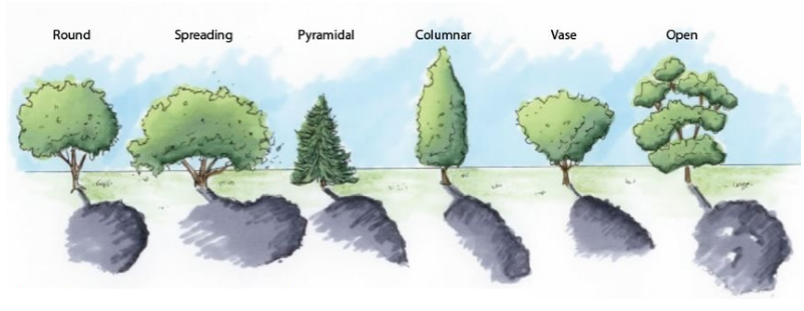CBSE Class 7 Science Notes Chapter 17:
Class 7 Science Chapter 17 Forests Our Lifeline Revision Notes & Short Keynotes, written by knowledgeable Science teachers using the most recent CBSE(NCERT) textbook editions, is available for free download as a PDF.
To improve your score on the CBSE board exam, sign up online for science tutoring for Class 7 NCERT Solutions here. Students can get free CBSE Solutions (NCERT) and other study materials from here.
CBSE Class 7 Science Notes Chapter 17 Overview
Chapter 17 of Class 7 Forests Our Lifeline tells the engrossing tale of Earth's green protectors. These magnificent woods emerge as the vital backbone of life, supplying oxygen, controlling water, and serving as a refuge for a variety of species. As they turn the pages, they learn about the vital functions that forests perform, such as regulating the temperature and serving as hubs for biodiversity.
The chapter highlights ethical conservation while revealing the wealth of resources found in forests. Students understand the tremendous influence of forests on human survival and the pressing need to preserve these lifelines for a sustainable future as they dive deeper into the complex network of nature.
CBSE Class 7 Science Notes Chapter 17 PDF
Here we have provided CBSE Class 7 Science Notes Chapter 17 for the ease of students so that they can just download the pdf and use it easily without the internet. These CBSE Class 7 Science Notes Chapter 17 will help students understand the chapter better.
CBSE Class 7 Science Notes Chapter 17 PDF
CBSE Class 7 Science Notes Chapter 17
Here we have provided CBSE Class 7 Science Notes Chapter 17 for the ease of students so that they can prepare better for their exams.
What is a forest?
A region or a section of ground covered with trees and a diverse range of plants is called a forest.
In addition, forests support a wide range of living things, including birds, microbes, plants, shrubs, trees, and wild animals.
Abiotic, or non-living, elements like sunlight, air, nutrition, water, and rocks are also included.
There exist diverse types of forests over the planet, contingent on the topography and climate of a given area.
Forests are an essential resource because they serve several purposes for both nature and humans.

Forests are home to numerous plant species
The forest is home to a variety of tree species, including teak, fig, sal, amla, neem, bamboo, and Sheesham.
The forest is home to a variety of plants, shrubs, climbers, creepers, grasses, and herbs in addition to trees.
These plants provide a variety of benefits to both humans and the environment.
The forests expand naturally.
Since woods offer plants suitable environmental circumstances for germination and independent growth, there is no need to put trees there.
Crown
The upper part or top of a tree is called its
Crown
.

Canopy
Since there is no sky visible through the tall trees in the forest, their branches give the impression that the woodland is roofed. We refer to this as Canopy.
Stratification in Forests
Stratification is the process of creating multiple strata within a natural ecosystem based on the heights of the local flora. As a result, there is less rivalry among the animals, increasing their chances of surviving. The environment, temperature, amount of light, type of soil, and rainfall all affect how many layers a forest has. In general, a forest's trees are separated into the following sections:
The top layer of soil-dropped leaves stems, and bark makes up the forest floor.
The Herb Layer is made up of plants that grow above ground but don't have woody stems, like grasses. In the woodlands, their numbers are typically lower.
The Shrub Layer is made up of tiny to medium-sized plants. The most sunlight is needed for this layer.
Plants that grow above the forest floor but below the canopy are referred to as the understory. They grow more slowly when exposed to less light.
The tree crowns make up the canopy. It is in direct sunshine all the time.
The uppermost layer of trees is known as the Emergent Layer. Tropical woodlands are typically home to it.
Forests are a habitat for many kinds of animals
Numerous wild creatures, insects, and microbes find food, shelter, and favourable environmental circumstances in forests.
They are housed by the forest's trees and fed by a wide range of flora and fauna.
Because of the extremely fertile soil found in forests, a wide range of insects and microorganisms can be found there, as it offers them suitable life conditions like water and nutrients.
Due to their rich biodiversity, woods also sustain a variety of food chains. The various creatures that inhabit the earth are interdependent. For example, herbivores consume plants, and herbivores are dependent on predators. A food chain is a group of organisms that are reliant on one another for sustenance.

What is hummus?
It is a material with a black tint that is present in soil. Decomposing and dead organisms are used to make humus. The decomposing material is consumed by the microorganisms, who turn it into humus.
Who are decomposers?
Decomposers are creatures that consume dead and decomposing plants and animals and turn them into humus.
How are nutrients recycled in the forest?
Plants, insects, and microorganisms all require the nutrients found in soil.
When they pass away, the decomposers transform their remnants into organic stuff.
This recycles the nutrients and maintains the fertility of the forest soil.
Why are forests called green lungs?
It is well known that plants absorb carbon dioxide and expel oxygen.
As a result, the plants in the woods give the animals oxygen, and the mammals in turn give the plants carbon dioxide.
In this way, trees can maintain an equilibrium between carbon dioxide and oxygen in the atmosphere. The term "Green Lungs" refers to woods for this reason.

Do people live in the forest?
Yes, woodlands are home to a variety of tribes. These people rely on the forest for supplies of food, drink, shelter, and medical care.
Why are forests called dynamic living entities?
To exist in the forest, all living things—plants and animals alike—depend on one another.
The plants provide the nourishment for the herbivores.
The herbivores are the source of food for the predators.
More plants can flourish because the decomposing remains of dead animals, plants, and their excrement give them enough nutrients to do so.
The forest's dead matter is broken down by the decomposers, who also promote plant development. Thus, the term "dynamic living entity" refers to forests.
How do forests prevent floods and soil erosion?
Rainwater can permeate the ground naturally because of forests. The area next to the forest has a high water table as a result.
Floods are avoided and water flow is regulated by the forests.
This is because the trees and vegetation block the rainwater from draining off.
In this method, the surrounding streams can receive a controlled water supply from the forests.
Additionally, the plant roots bind to the soil, preventing it from always being washed away by intense rainfall. They thereby stop soil erosion as well.
How do forests prevent pollution?
First of all, forests are abundant in oxygen. As a result, the air in the forest and its surroundings is always pure and fresh.
Strong winds and dust storms are kept at bay by the presence of forests.
The regions that encircle the woodlands typically experience chilly temperatures and heavy precipitation.
Additionally, the adjoining highways' harsh noises are absorbed by the woodlands, preventing noise pollution in the surrounding neighbourhoods.

How do forests preserve the water cycle?
It is well known that transpiration is how plants eliminate surplus water from their bodies.
Water vapour is emitted into the atmosphere during this process.
Consequently, woods raise the atmospheric concentration of water vapour.
As a result of this water vapour condensing and forming clouds, the area experiences more rainfall.
Rainwater seeps into the earth, raising the water table below the surface.
Forests protect the water cycle as a result.
Benefits of CBSE Class 7 Science Notes Chapter 17
Our Class 7 Science Revision Notes, Chapter 17 Forests Our Lifeline These notes serve as priceless allies, demystifying the complex beauties of forests and providing a clear grasp of their importance in our lives.
Conceptual Summaries:
Learn the essential ideas behind forest ecosystems quickly and uncover the mysteries surrounding their function as Earth's lifelines.
Simplified Understanding:
Make sense of the complicated subjects of forest science by breaking them down into digestible ideas to improve understanding.
Last-Minute Forest Wisdom:
A useful study aid that guarantees a thorough comprehension of important forest-related concepts, ideal for last-minute exam preparation.
Enhanced Memory Retention:
For efficient learning and retention, reinforce the important knowledge you have about forests by solidifying it.






